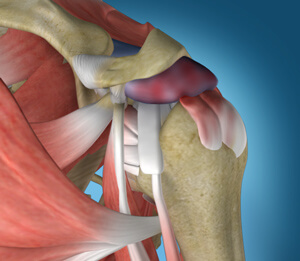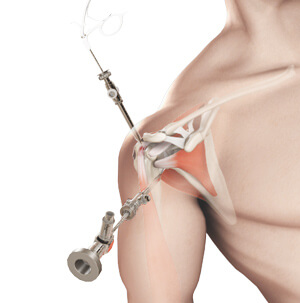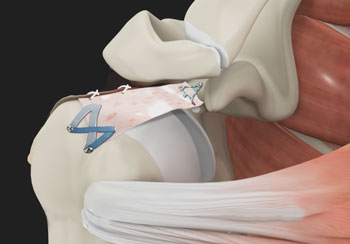-
Shoulder Anatomy

The shoulder is the most flexible joint in the body that enables a wide range of movements including forward flexion, abduction, adduction, external rotation, internal rotation, and 360-degree circumduction. Thus, the shoulder joint is considered the most insecure joint of the body, but the support of ligaments, muscles, and tendons function to provide the required stability.
Know More Launch Movie
Conditions
-
Shoulder Instability

Shoulder instability is a chronic condition that causes frequent dislocation of the shoulder joint. A dislocation occurs when the end of the humerus (ball portion) partially or completely dislocates from the glenoid (socket portion) of the shoulder.
Know More Launch Movie -
SLAP Tears

The term SLAP (superior –labrum anterior-posterior) lesion or SLAP tear refers to an injury of the superior labrum of the shoulder.
Know More -
Capsular Tears

Injury to the capsular structures can occur in the setting of trauma or repetitive overhead movements and most commonly involves the inferior glenohumeral ligament and axillary pouch.
Know More -
Internal Impingement/Thrower’s Exostosis

Internal impingement is characterized by posterior shoulder pain when the athlete places the humerus in extreme external rotation and abduction as in the cocking phase of pitching or throwing.
Know More -
RTC Tears

The rotator cuff is a group of 4 muscles in the shoulder joint including the supraspinatus, infraspinatus, teres minor, and subscapularis.
Know More Launch Movie -
Shoulder Impingement

Shoulder impingement is the inflammation of the tendons of the shoulder joint. It is one of the most common causes of pain in the shoulder. Shoulder impingement is also called swimmer’s shoulder, tennis shoulder or rotator cuff tendinitis.
Know More Launch Movie -
Thoracic Outlet Syndrome

The thoracic outlet is a small passageway leading from the base of the neck to the armpit and arm. This small area contains many blood vessels, nerves, and muscle.
Know More
Procedures
- Shoulder Arthroscopy

Shoulder arthroscopy is a minimally invasive diagnostic and surgical procedure for conditions and injuries involving the bones, cartilage, tendons, ligaments, and muscles of the shoulder joint.
Know More Launch Movie - Capsular Repair

Shoulder capsular repair is a surgical procedure to treat shoulder instability that does not improve with more conservative or non-surgical methods.
Know More - Arthroscopic SLAP/Labral Repairs

Shoulder instability usually occurs when the lining of the shoulder joint (the capsule), ligaments or labrum become stretched, torn, or detached, allowing the ball of the shoulder joint (humeral head) to move either completely or partially out of the socket.
Know More Launch Movie - Open Laterjet

The Latarjet procedure is an advanced procedure to treat shoulder instability caused by lack of bony support in the shoulder joint. The goal of Latarjet is to augment the glenoid with additional bone to hold the head of the humerus within the shoulder socket more securely.
Know More Launch Movie - RTC Repairs

The rotator cuff is a group of 4 muscles in the shoulder joint including the supraspinatus, infraspinatus, teres minor, and subscapularis. These muscles originate in the scapula and attach to the head of the humerus through tendons. The rotator cuff forms a sleeve around the humeral head and glenoid cavity, providing stability to the shoulder joint while enabling a wide range of movements.
Know More Launch Movie














